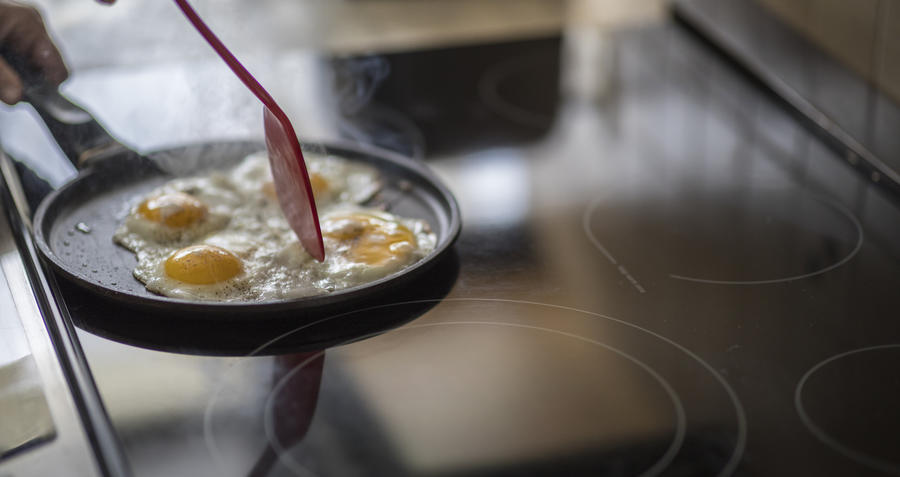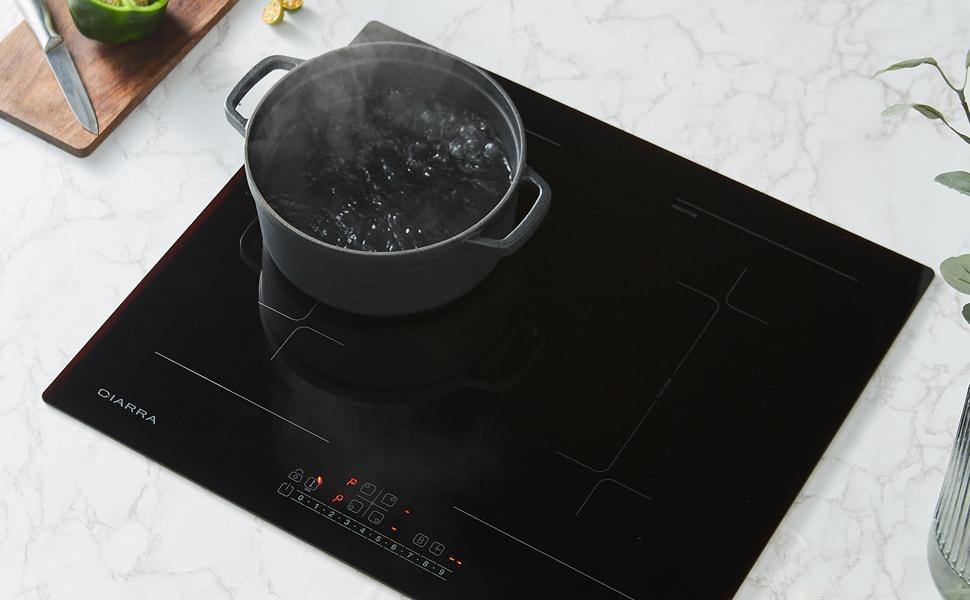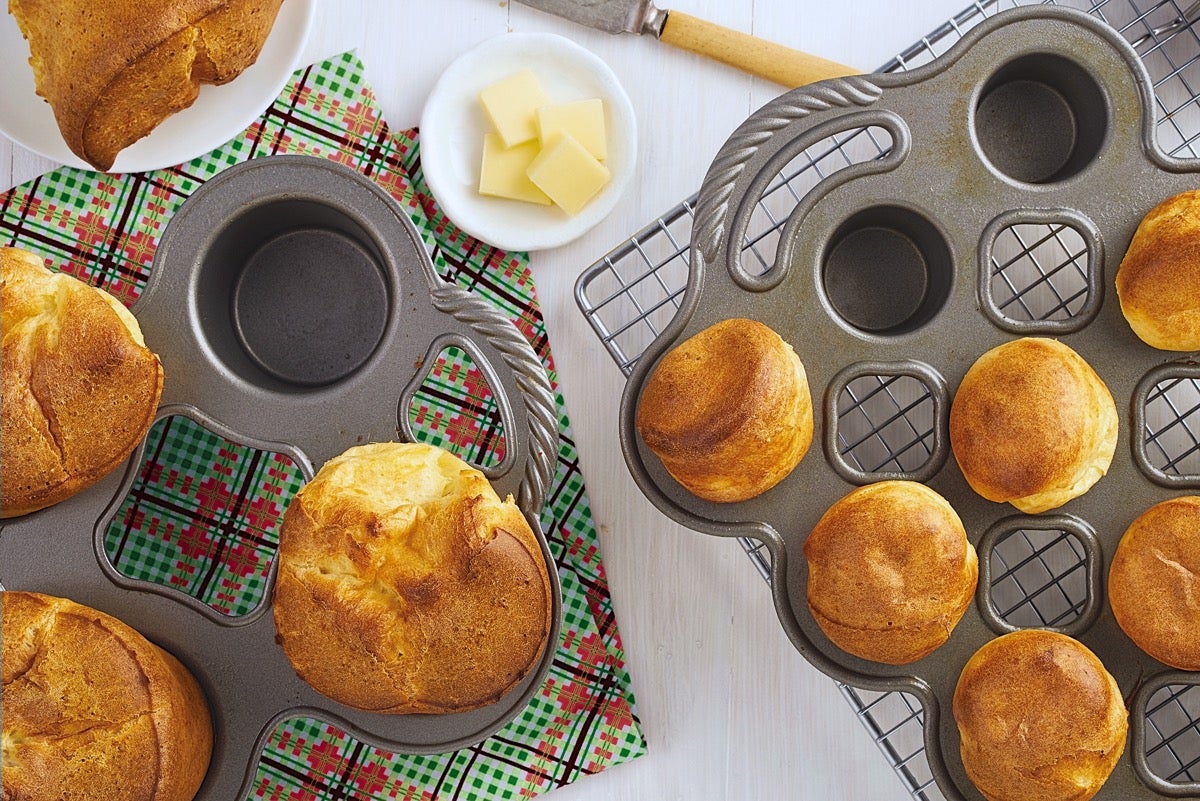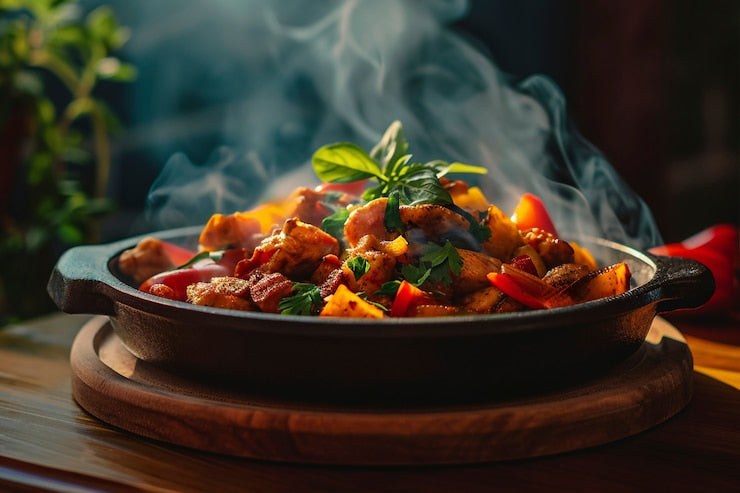For kitchen professionals, mastering the nuances of cookware is crucial. One of the vital aspects to consider is how cast iron and coil size on induction interact. This relationship can significantly affect cooking efficiency and outcomes.
Cast iron is renowned for its ability to retain and distribute heat evenly, making it a favorite among chefs. However, when it comes to induction cooking, the coil size underneath the cooktop plays a pivotal role in how heat is distributed across the cookware.

How Induction Cooking Works
Induction cooktops use electromagnetic fields to directly heat pots and pans. Instead of using a flame or an electric element, induction cooking relies on a copper coil beneath the glass surface. When the cooktop is turned on, an electric current passes through the coil, creating a magnetic field.
This magnetic field induces an electric current in the cookware placed on the cooktop, generating heat directly in the pan. For cast iron, which has excellent magnetic properties, this method of cooking is highly effective. However, the size of the coil can influence how evenly the heat is distributed.
The Impact of Coil Size on Cooking
The coil size on an induction cooktop is crucial. A coil that is too small for the cookware can lead to uneven heating, where the center of the pan is much hotter than the edges. This can be problematic when cooking dishes that require consistent heat.
For instance, when using cast iron skillets for frying or searing, a mismatched coil size can cause issues like hot spots or uneven cooking. This is because the electrical current may not distribute evenly across the entire surface of the pan.
Choosing the Right Coil Size
To optimize cooking with cast iron on induction, it's essential to match the size of the cookware with the coil size. Most induction cooktops come with multiple coil sizes to accommodate different cookware diameters. Choosing the right size ensures even heating and efficient cooking.
Experts recommend using a coil size that covers at least 75% of the cookware's base for optimal results. This ensures that the heat is distributed evenly across the pan, preventing hot spots and ensuring a uniform cooking process.
Benefits of Using Cast Iron on Induction
Despite the challenges of matching coil size, using cast iron on induction cooktops offers several benefits. Cast iron is incredibly durable and retains heat well, making it ideal for slow cooking and dishes that require consistent heat.
Additionally, the natural non-stick surface of well-seasoned cast iron can enhance the quality of your culinary creations. From crispy seared meats to perfectly cooked vegetables, the possibilities are endless.
Furthermore, the quick response time of induction cooktops means that cast iron can reach the desired temperature rapidly, saving time and energy in the kitchen.
Common Challenges and Solutions
One common challenge with using cast iron on induction is the potential for scratching the cooktop surface. This can be mitigated by handling the cookware carefully and using a protective barrier, such as a thin cloth or silicone mat, between the pan and the cooktop.
Another issue is the weight of cast iron, which can be cumbersome for some users. To address this, consider using lighter alternatives like enameled cast iron, which offers similar benefits with less heft.
Practical Tips for Kitchen Professionals
For those working in professional kitchens, understanding the intricacies of cast iron and coil size on induction can elevate the quality of your dishes. Here are a few practical tips:
- Ensure your cast iron cookware is compatible with induction cooktops. Most modern cast iron is suitable, but it's always best to check.
- Regularly season your cast iron to maintain its non-stick properties and prevent rusting.
- Use the correct coil size to ensure even heating and prevent hot spots.
- Handle your cookware with care to avoid scratching the cooktop surface.
For further insights into using cast iron on induction, you can visit this detailed guide or explore more about induction cooking on HowStuffWorks.

FAQ Section
Q1: Can I use cast iron on any induction cooktop?
A1: Yes, most cast iron cookware is compatible with induction cooktops, but it's always recommended to verify compatibility.
Q2: What if my coil size is smaller than my cast iron pan?
A2: While it can still work, you may experience uneven heating. It's best to use a coil size that covers at least 75% of the pan's base.
Q3: How do I prevent my cast iron from scratching the induction surface?
A3: Use a thin cloth or silicone mat under the pan and handle it carefully to minimize the risk of scratches.
For more tips and insights, check out the Culina Cooks Blog where you can find additional resources and expert advice.






Leave a comment
This site is protected by hCaptcha and the hCaptcha Privacy Policy and Terms of Service apply.